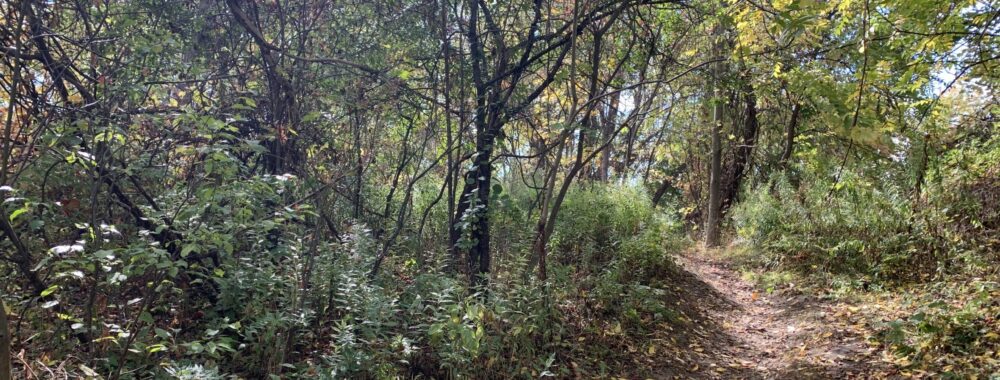As I am away from my spot in Centennial Woods this week again since I am home for the holidays, I get the chance to reflect on the human history of my place. I’ve gotten to take NR1 this past semester and in that class I got the privilege to learn about the land use history in Centennial. From farming, to research and everything in-between, this spot has a lot of different stories. Before Centennial was a UVM natural area, this land was cleared during the great cutover and used for farming. In fact you can still see barbed wire that trees have grown around leaving traces of this industry. UVM bought this land in the Burlington area from property owners including Baxter (1891), Ainsworth (1904), Hickok (1908), Kirby (1938), and Unsworth (1968)1. Centennial under UVM used to be a space where the UVM ROTC program had housing, which is marked today by the ROTC wall that is left there – another piece of physical land use evidence. Supposedly the UVM medical center used to dispose of cadavers in these woods, and today there are dark ash pits leftover from bonfires held there. Under UVM, Centennial Woods – my phenology spot has become a forest that serves educational purposes, and recreational purposes.
- Centennial Woods Natural Area, Resources about UVM’s Centennial Woods Natural Area for Students, Researchers and Visitors. UVM Libraries Research Guides, 2019. Web. December 2nd 2020.
Citations: Centennial Woods Natural Area, Resources about UVM’s Centennial Woods Natural Area for Students, Researchers and Visitors. UVM Libraries Research Guides, 2019. Web. December 2nd 2020.
